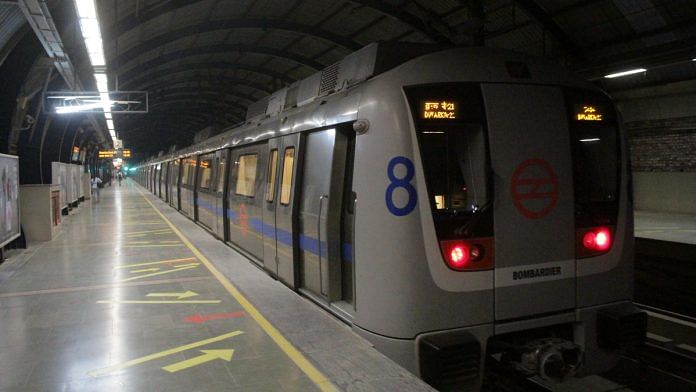New Delhi: On 24 December 2002, the Delhi Metro started operations with a small section of track across the Yamuna in north-eastern Delhi. Seventeen years on, the Delhi Metro network has expanded to cover 314 kilometres, with 299 stations across Delhi and the National Capital Region.
To celebrate the anniversary, the Delhi Metro Rail Corporation (DMRC) has organised an exhibition, an audio-visual look back at the journey so far, a live puppet show and an instrumental music performance at its headquarters, Metro Bhawan, on Barakhamba Road.
ThePrint brings you 10 lesser-known facts about the Delhi Metro to mark the occasion.
1. The voices behind the Delhi Metro announcements are those of yesteryear Doordarshan news anchors Rini Simon Khanna in English and Shammi Narang in Hindi.
2. The deepest point of the Delhi Metro lies 45 metres below the Rajiv Chowk station.
3. Every year, the Delhi Metro carries 700 million passengers — greater than the population of the United States.
Also read: Delhi Metro makes it to the 10 busiest metro systems in the world
4. Meenakshi Sharma, Anjali Minz and Vibha Kumari were the first female train operators on the Delhi Metro. Now, there are many more.
5. The escalators at the metro stations have a ‘sari guard’ feature, which stops saris from getting tangled in them.
6. Delhi Metro trains always have an even number of coaches — four in the past and then six and eight. This is because there are two types of coaches — the ‘D’ car which has the driver’s cabin and pantograph that pulls electricity supply from the overhead wires, and the ‘M’ or motor car that consists of three-phase induction motors, serving the purpose of transmission. Thus, the ‘D’ and ‘M’ cars serve as one unit, and cannot be used separately.
7. Most passengers complain when the lights and the AC go off at certain points in the metro journey. These are actually neutral zones, where the power supply switches from one sub-station to another.
8. As an environmental measure, the DMRC conducts rainwater harvesting along the route of the Blue Line.
9. There are no dustbins inside metro stations, except around some shops. Despite this, metro stations remain quite clean.
10. The United Nations has certified the DMRC as the first metro and rail-based system that gets carbon credits for reducing greenhouse gas emissions. It reduces about 6,24,000 tonnes of greenhouse emissions in Delhi every year.
Also read: Delhi Metro chief says free rides for women not possible until tech updated to check misuse




my dream I work in Delhi metro Rail corporation (loco Pilot)
I study diploma electrical engg
Delhi Metro is amongst the Best in World And way ahead of most European counterparts both in terms of Quality of Service ( cleanliness, punctuality) and price ( substantially Cheaper). And of course it is a great engineering feat.